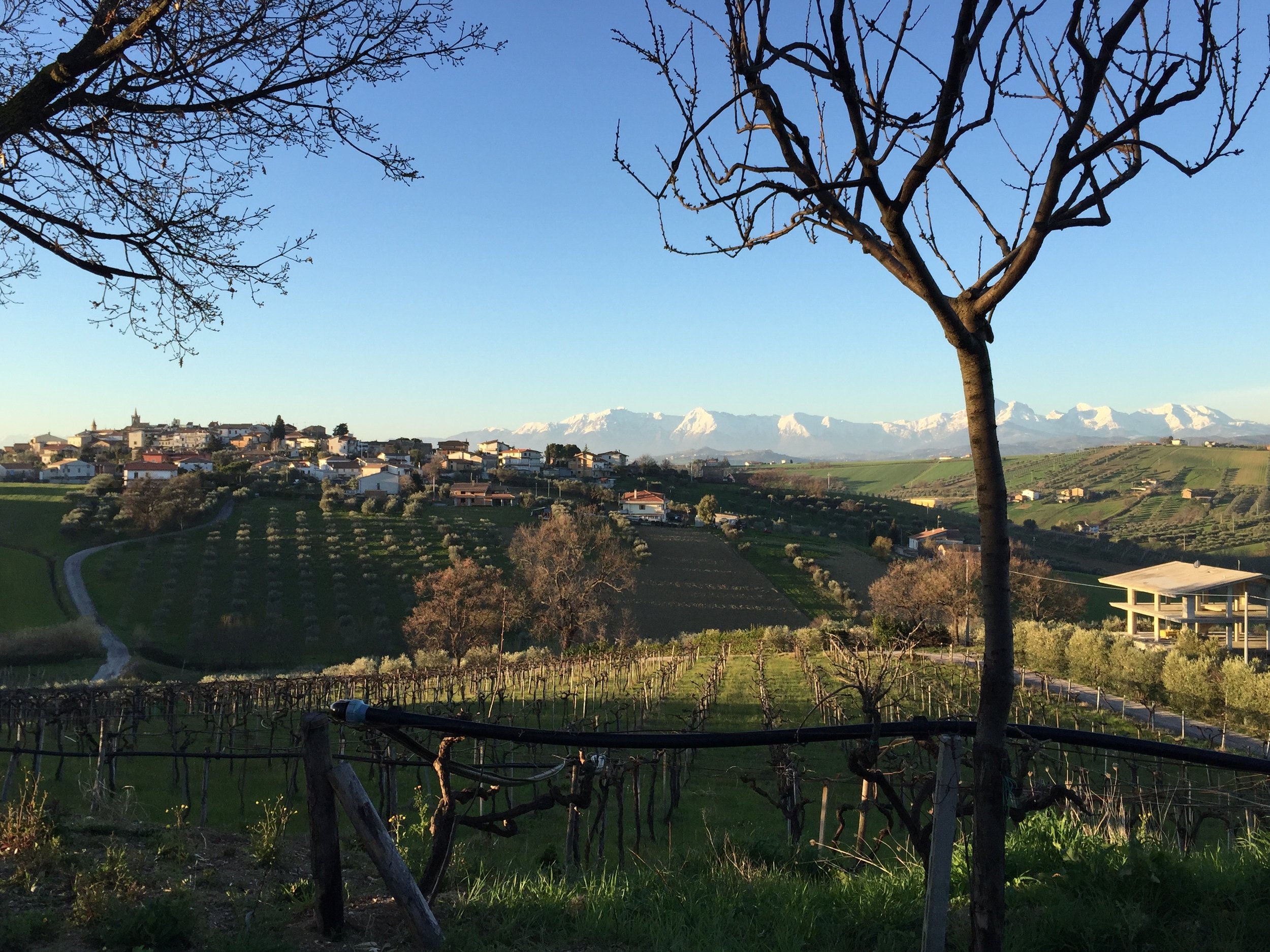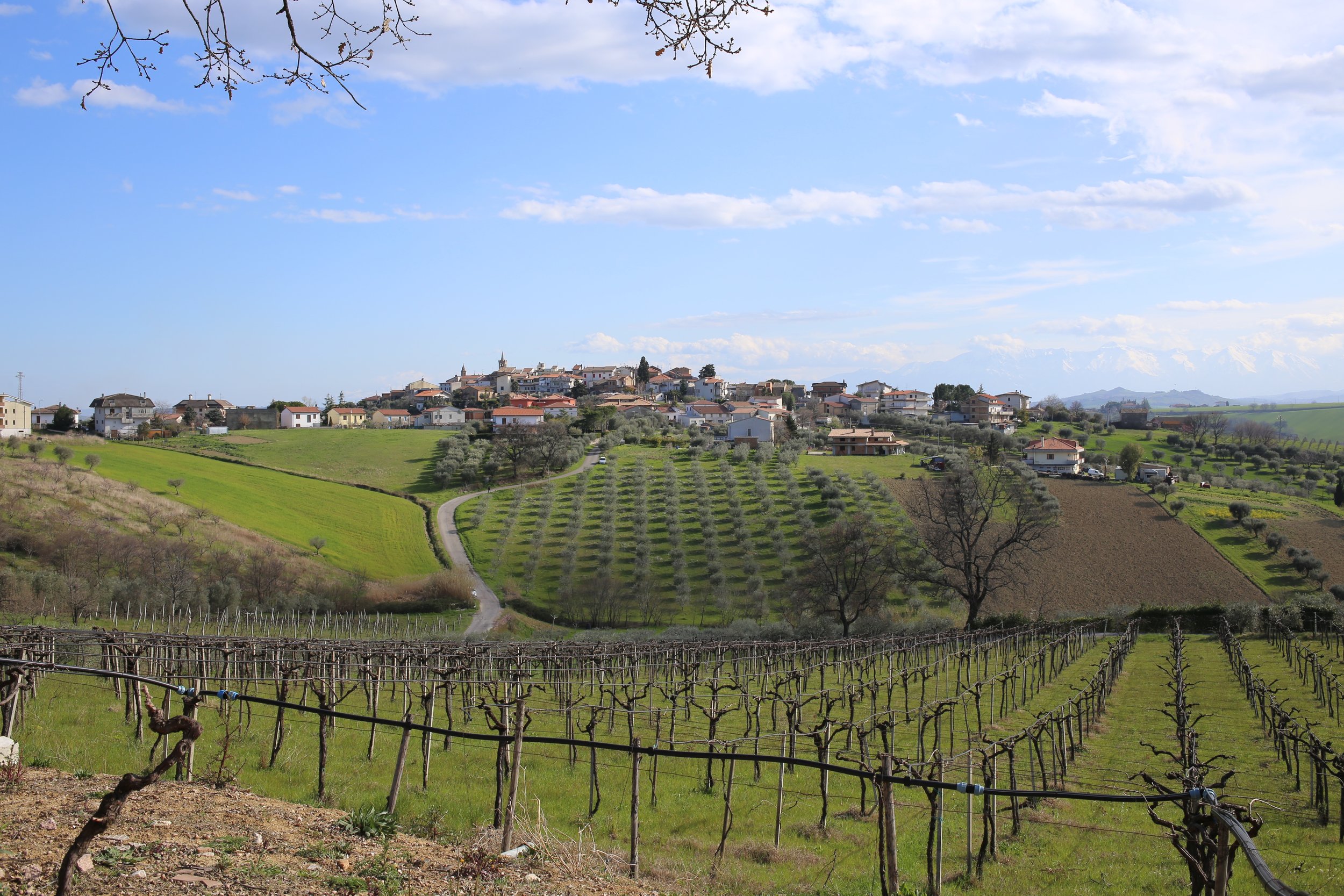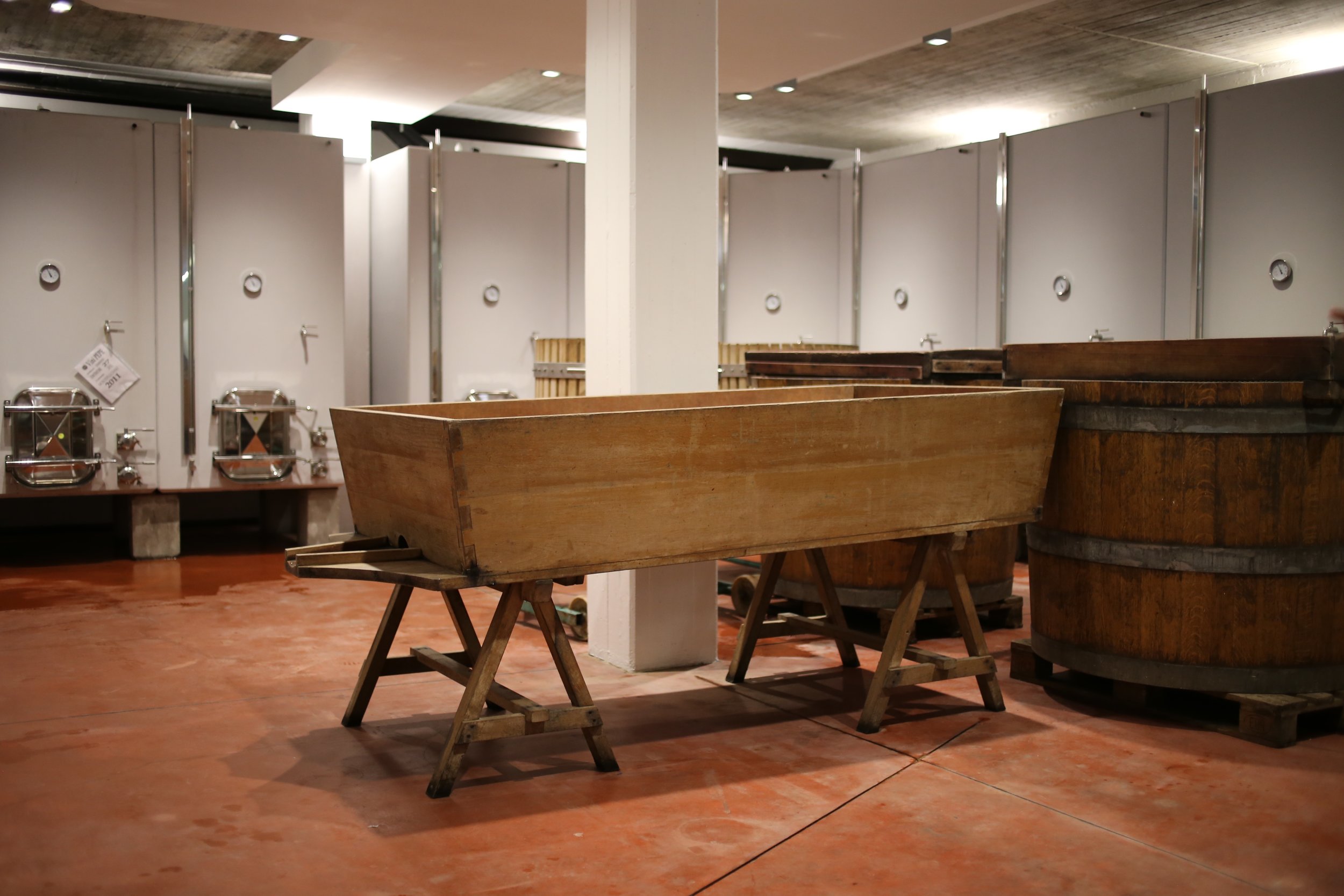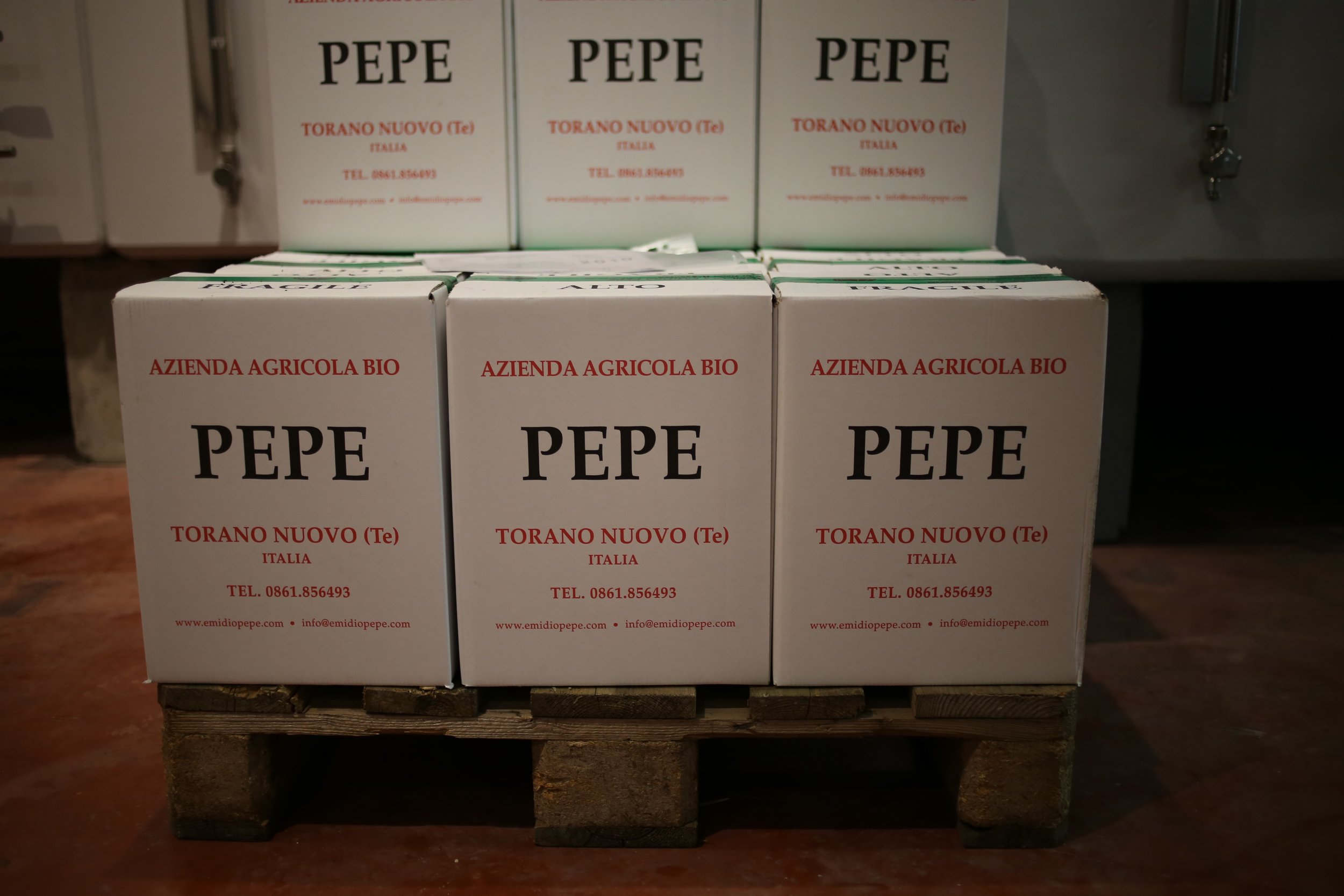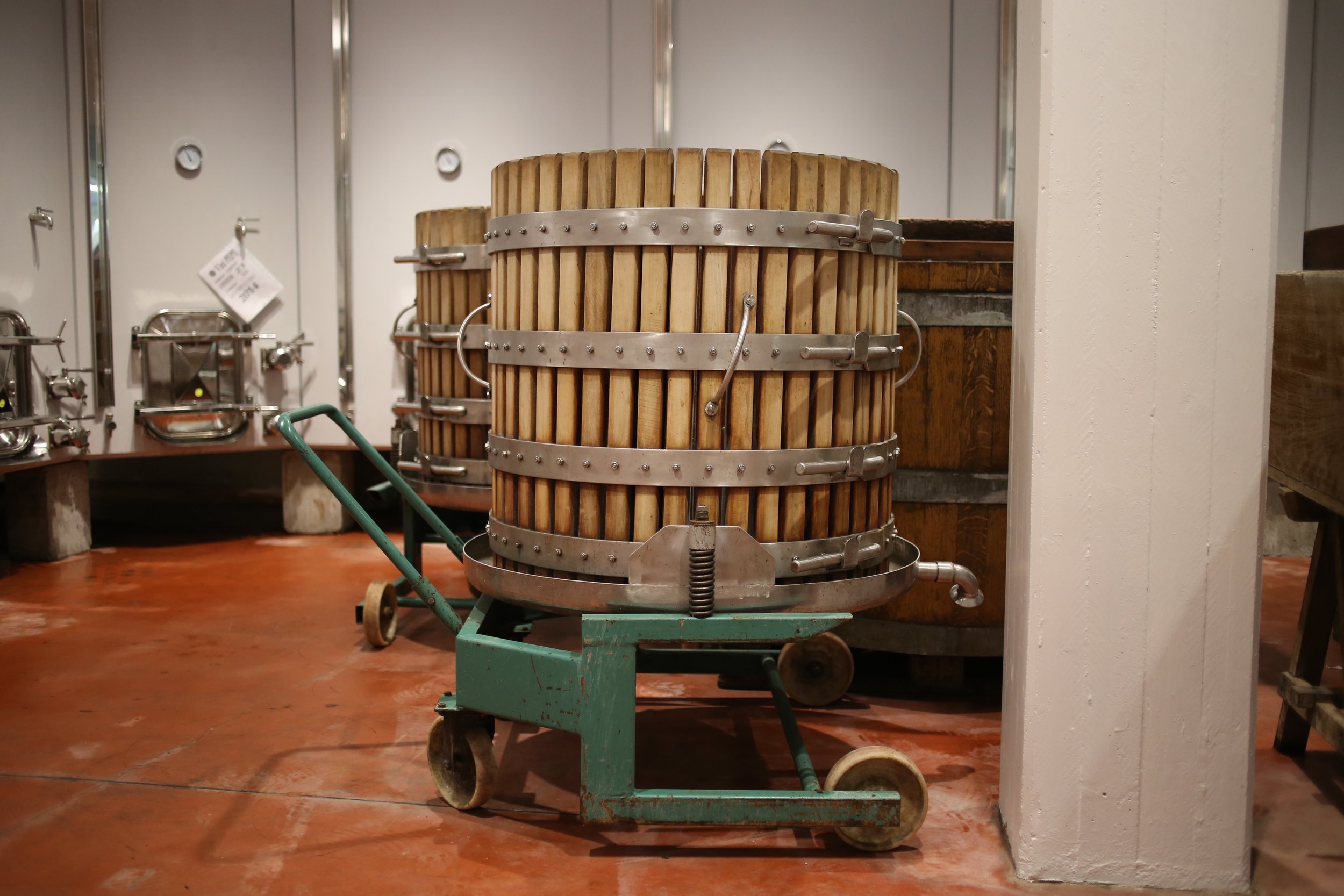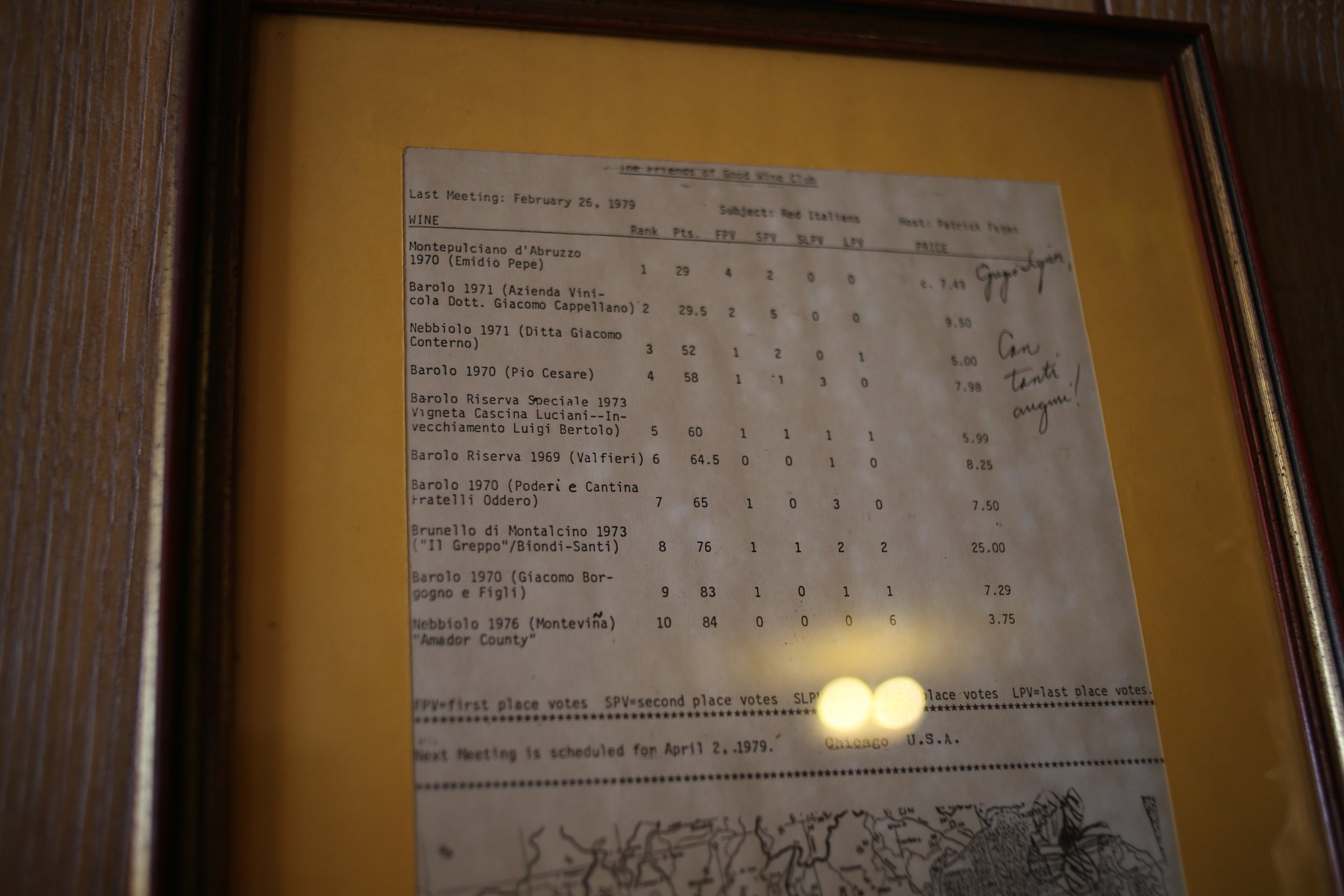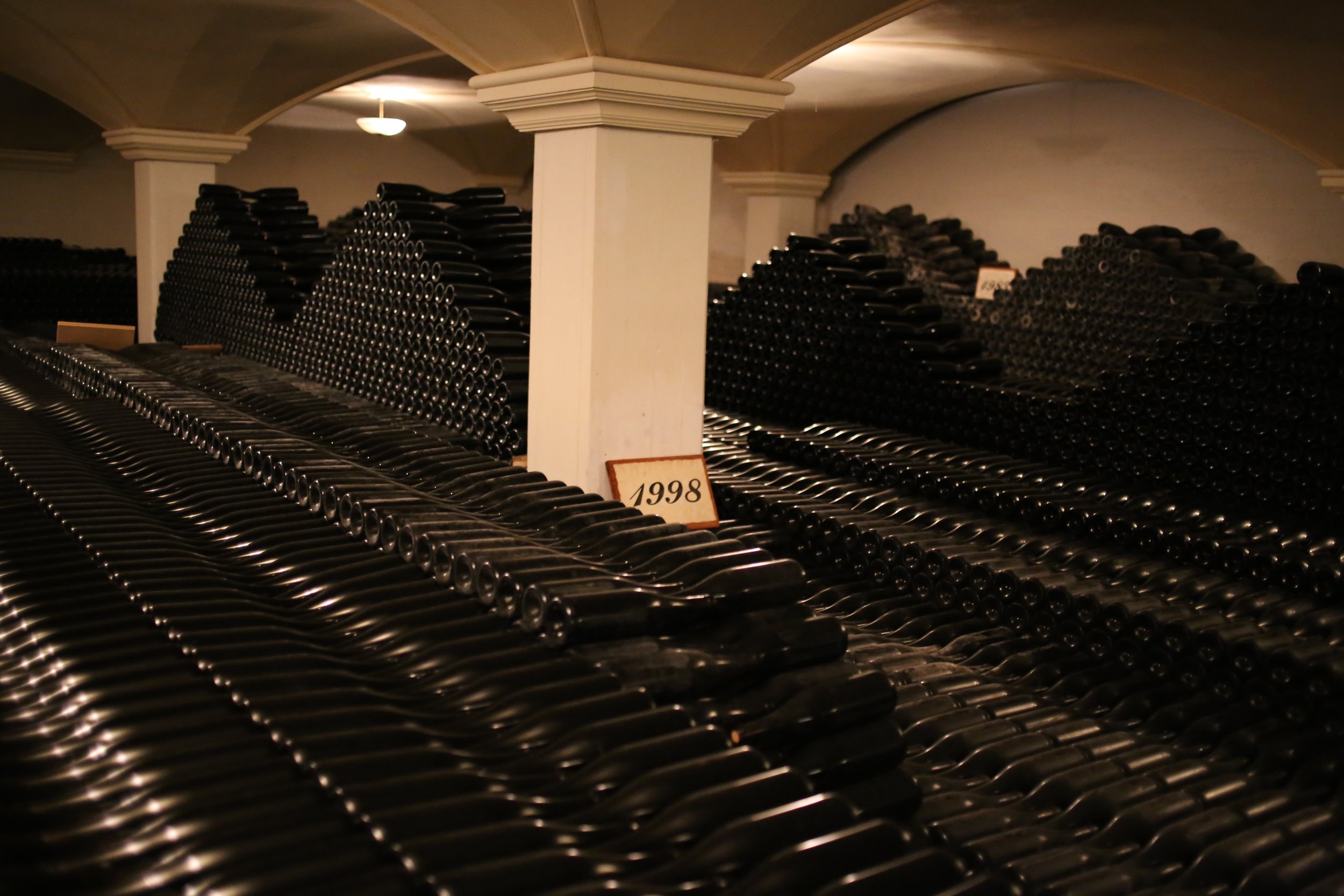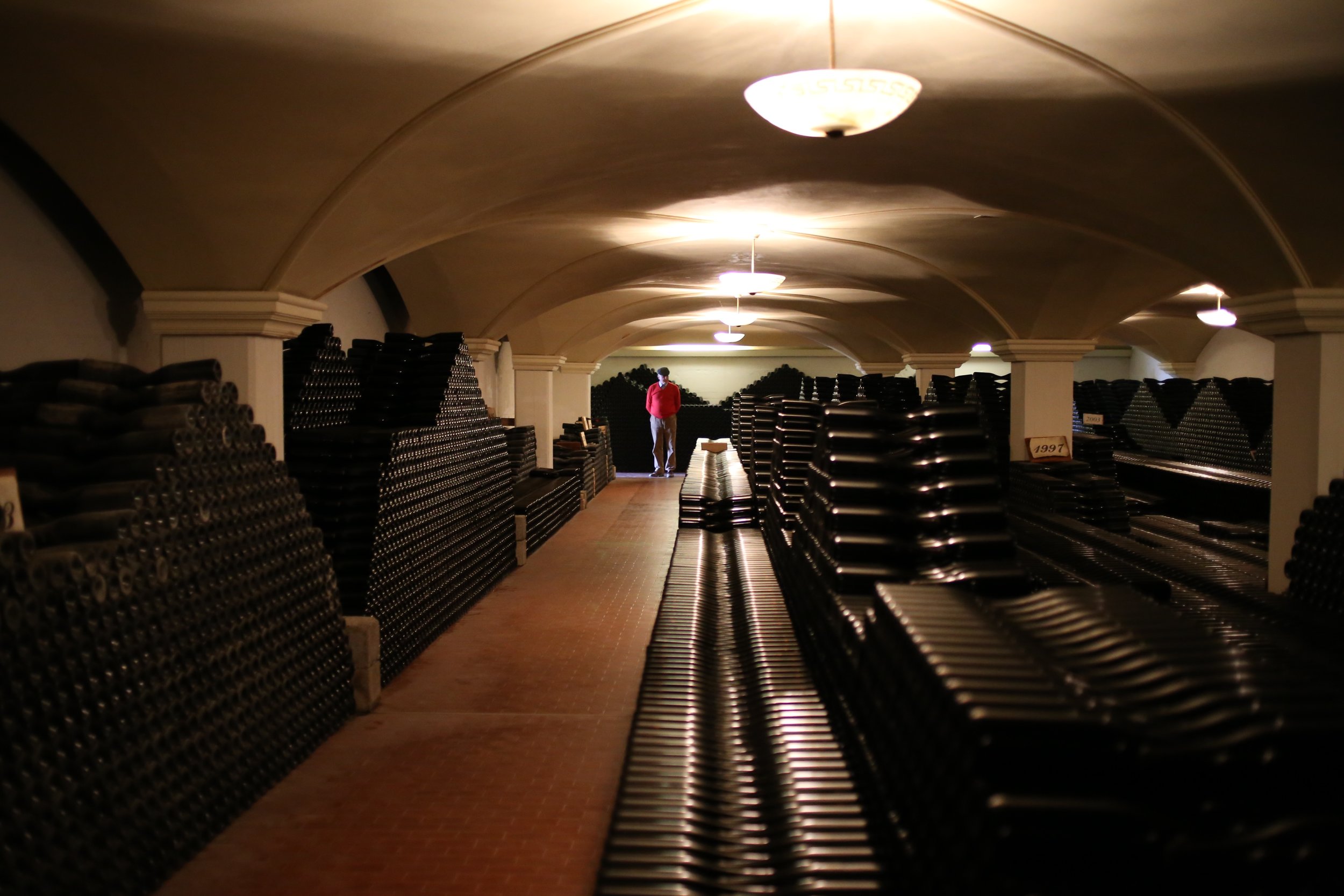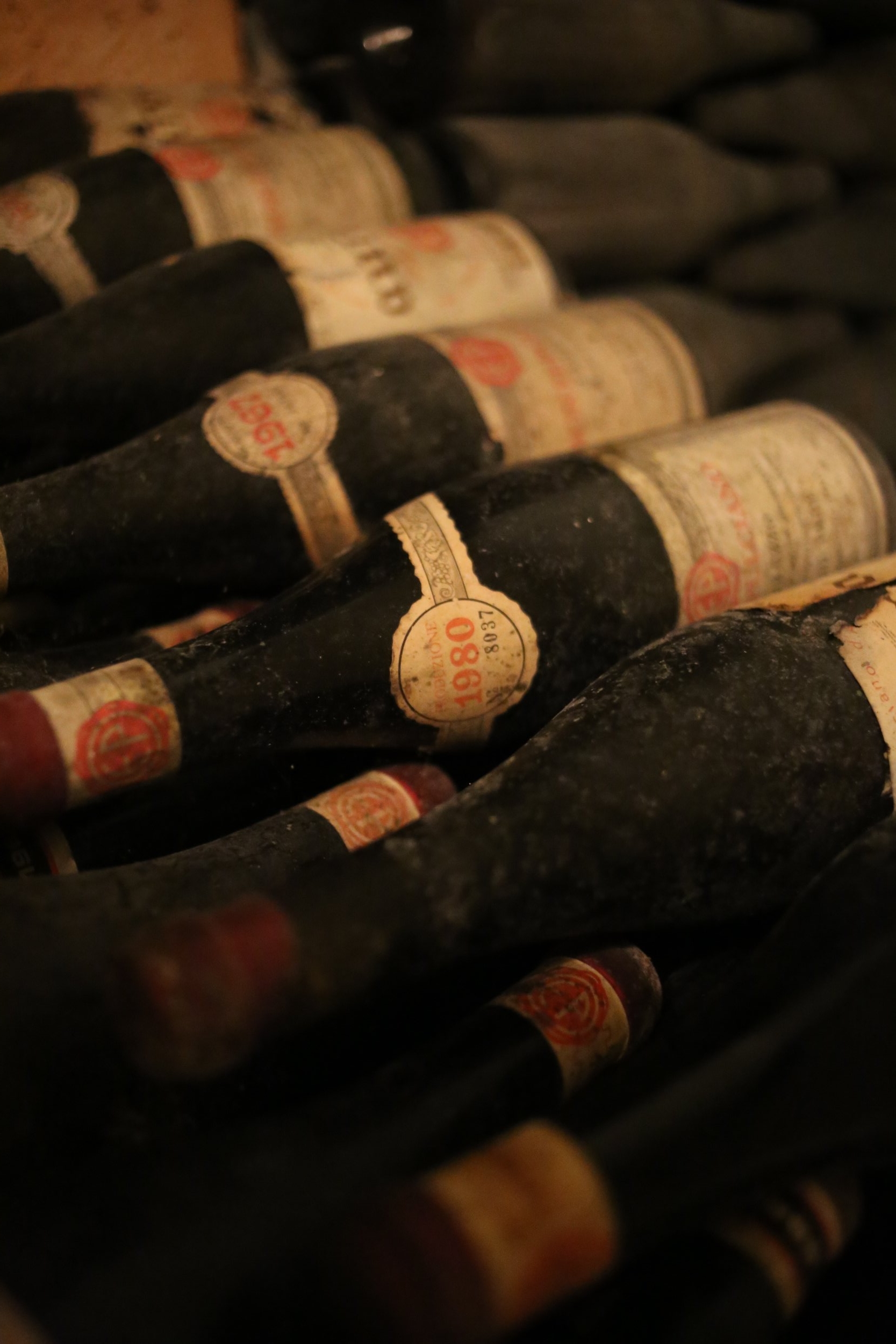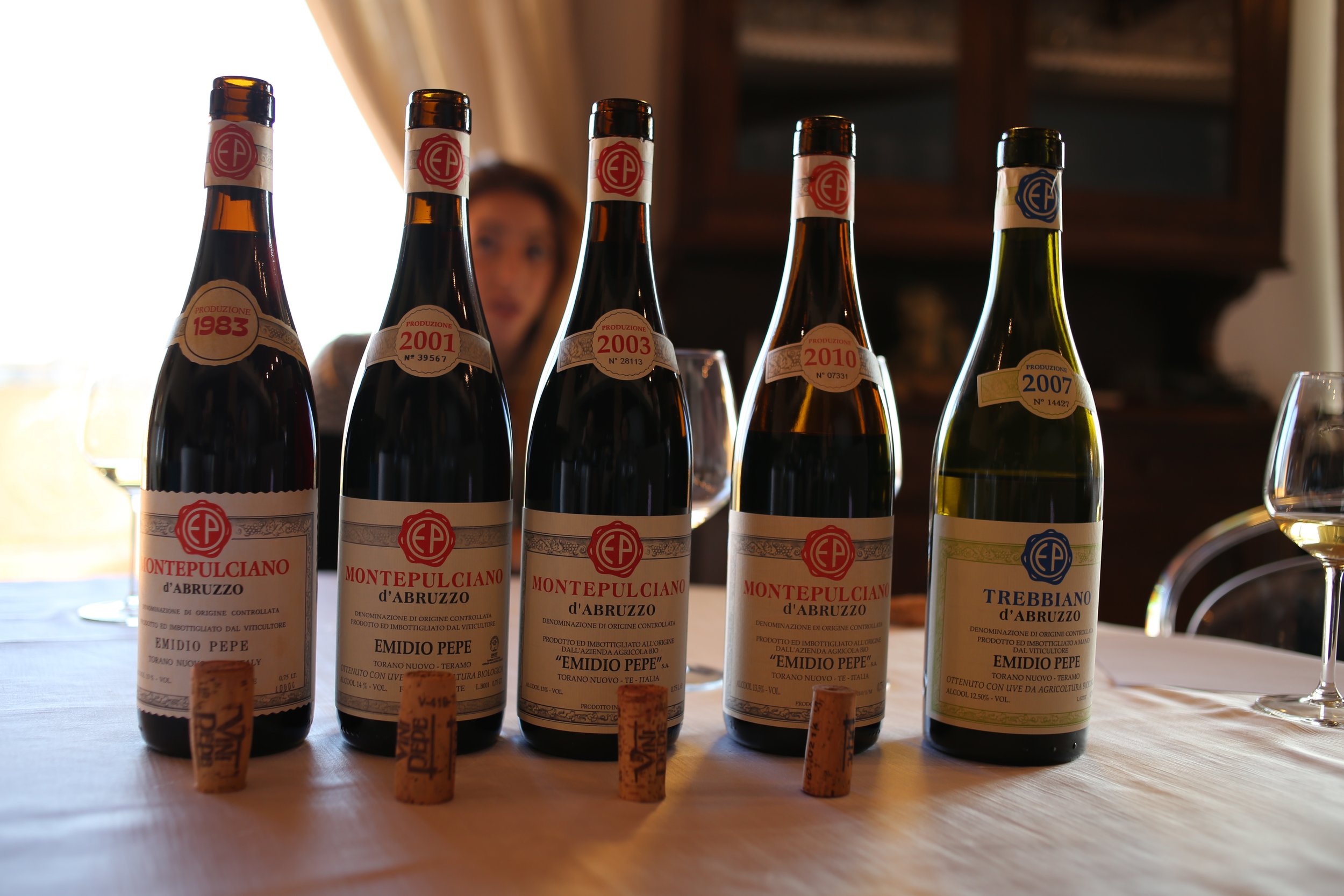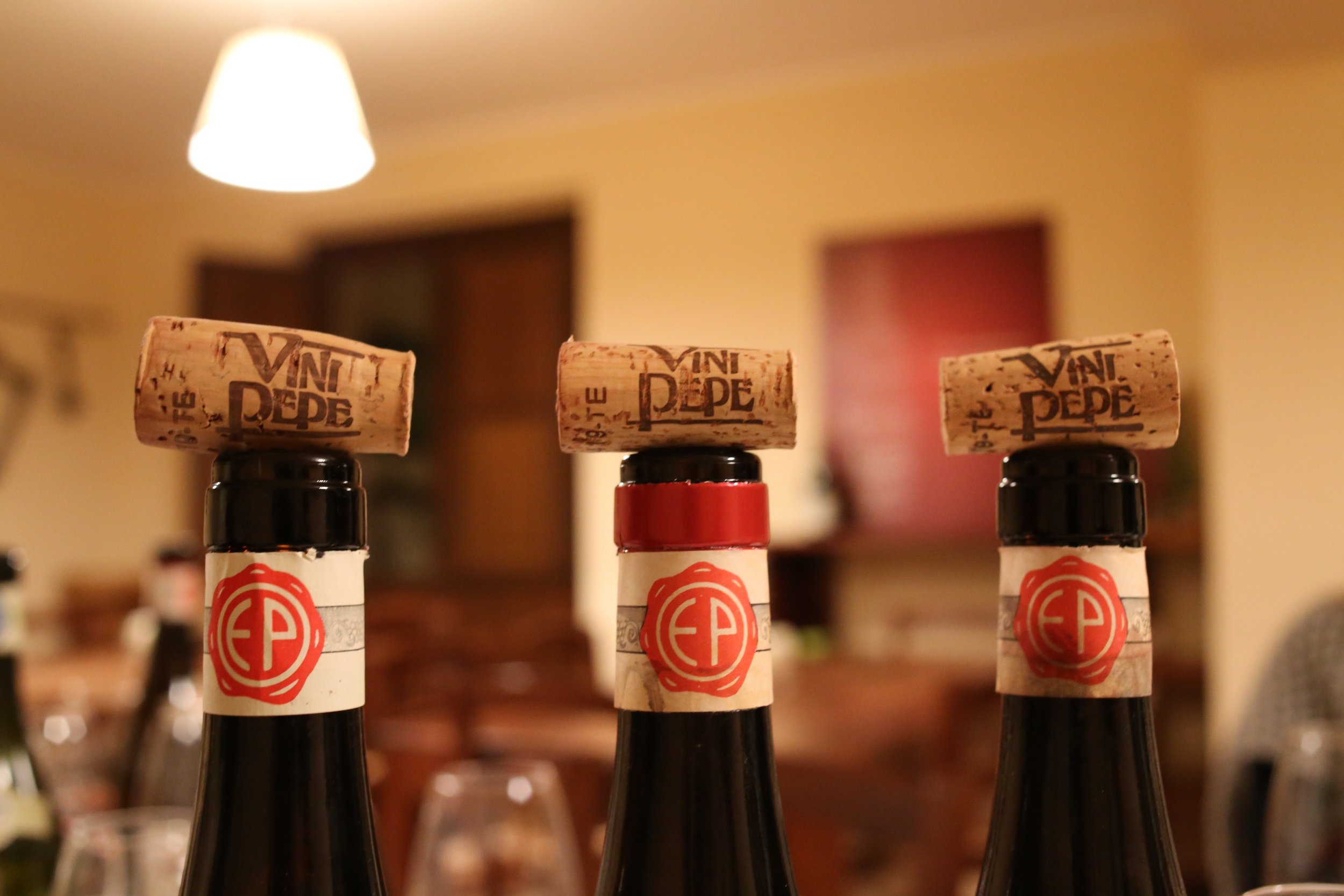Emidio Pepe
About Emidio Pepe:
This estate is too good to be true. The wines are amongst the best in Italy, the reds famous and the whites, in my view, just as good, and equally beautiful with age; the family that produces them is charming, three generations from Emidio himself (elegant in flat cap and red sweater vest) to his lovely, enthusiastic grand-daughter Chiara, who handles export markets, not to forget Emidio’s daughters Daniela and Sofia, who now run the winery; and the wines have been grown naturally and vinified using traditional techniques since the first vintage in 1964, perhaps the oldest and most genuine ‘natural wines’ in Italy, and not a hipster in sight. It’s just too perfect, the epitome of all good things in Old World viticulture; and it’s all real. Did I mention that the wines are breathtaking? And the Pepe family have a huge aging cellar where they keep large stocks of old wines, which are decanted to order by Emidio’s wife Rosa, so you can order old bottles of Pepe knowing that they’re genuine and that they’ve been stored perfectly. Ridiculous.
The winemaking is a complete throwback, nothing changed in a hundred years. The vineyards are planted using plants from massal selection of their own oldest vineyards, not clones, and are farmed biodynamically. The red grape bunches are de-stemmed on a grid by hand, pressed by foot, and fermented in cement tanks, then aged in those same tanks for 24-30 months, depending on the vintage. The white grape bunches are put into a wooden tub and pressed by foot, the juice running out of a spout in the side to be pumped into the cement fermenting tank. No yeasts are added, no SO2 is added (as a rule). The wines are then aged in those same cement tanks, then bottled; they undergo malolactic fermentation in the bottle. Montepulciano, the deeply colored, broad-shouldered red wine grape found widely in the Abruzzo, is known for aging, so it’s no surprise that the Pepe reds go for decades, but the Trebbiano d’Abruzzo here (made with the variety Trebbiano Abruzzese) is excellent and ages beautifully in the bottle. (Note that this should not be confused with Trebbiano Toscano, which is an inferior variety; there are a number of Trebbiano grapes grown in Italy.) The other white variety made here is Pecorino, which is a relative newcomer to the Marche and Abruzzo regions, but very promising.
_____________________________________________
The Wines:
Trebbiano d’Abruzzo
Ian d’Agata describes good Trebbiano Abruzzese as having ‘just a hint of white flowers and stone fruit on the nose, a creamy mouthfeel, and plenty of acidity with a citrusy minerality’, which is perfect for the younger bottlings. When aged, Pepe’s Trebbiano has the complex aroma and balanced texture of very good white Burgundy, with notes of lemon-peel, parmesan rind, herbs, and baked apple. Italy makes relatively few classic ageworthy white wines, and this is one of them.
Pecorino
Ian d’Agata describes the variety as ‘delicately herbal (sage, thyme, mint) with balsamic nuances to the crisp apple and pear aromas and flavors’. Leaner and brighter than the Trebbiano, quite different, very attractive white wine.
Montepulciano d’Abruzzo
Very deep red-black when young, with aromas and flavors of raw meat, black fruit (including blackcurrant), expensive leather, hints of bacon, ink, and dry-cured olive; a big, beefy wine but not bitter or alcoholic, surprisingly fresh in most vintages for such a substantial wine. Older bottles shade to Hermitage-like brickish red with aromas and flavors of berries, roast meat, forest-floor, dried orange-peel, and many others, with superb elegant texture. My definition of fine wine is that it’s indescribable, and words fail me here. One of Italy’s best aged reds.
Emidio Pepe's estate is located in the town of Torano Nuovo, Abruzzo
_____________________________________________
Helpful Links:
Visit the Emidio Pepe website
Learn more about Emidio Pepe’s sustainability practices
Please note that the Pepe wines sold in the US are not the same bottlings that are sold in Europe. The wines sold here have always been different cuvees, and they are now labeled as such, with a Vecchie Vigne stamp on the label. New offerings without the stamp should be assumed to be the young vines cuvee. For more information, please click - Vecchia Vigne
